Features of planting hyacinths

Bulbous hyacinths are very popular in garden areas and private plots. The flower attracts gardeners not only with its amazing appearance, but also with its magical aroma. Hyacinths can become the main decoration of the garden, or they can complement a ready-made flower arrangement. But so that the flowering does not disappoint the owner of the site, it is important to take a responsible approach to the stage of planting the culture.
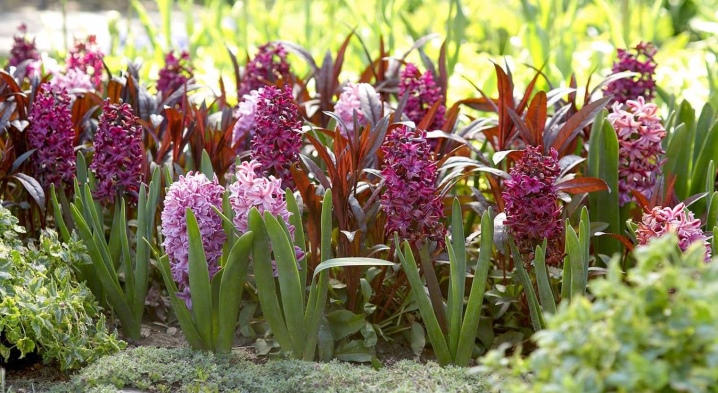
Optimal timing
It is believed that the plant can be planted at any time, however, the preferable period is autumn, the last days of September or early October. If you plant the bulbs in winter, then no one will guarantee that they will survive the frosts, and when planted in autumn, the seedlings will have time to take root and adapt to new conditions. To protect the planting from cold weather, it would be correct to mulch the area with peat.
The choice of planting material
Buy bulbs from trusted nurseries or responsible growers. Before choosing, you can consult with agronomists. The health of the plant, the abundance and splendor of its flowering depends on the quality of the planting material. The bulbs can be found on sale as early as August. You can also use flowers growing on the site, in this case, the tubers are dug up in the middle of summer.
First of all, pay attention to the dimensions of the onion. The larger it is, the larger the peduncle will be, the more colorful the petals will bloom. The optimal size of the specimen is from 5 cm. The surface of the specimen should be dry, there should be no foreign stains, mechanical damage, defects indicating the formation of putrefactive processes.
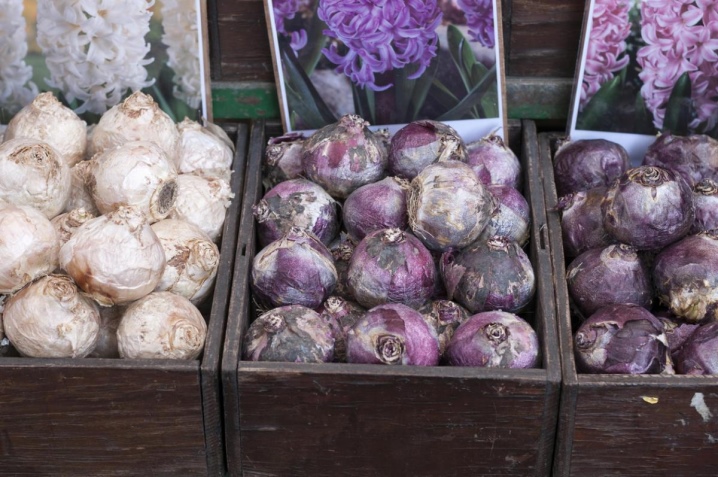
To improve performance, the selected specimen is placed in a disinfectant solution before planting, and before that, after purchase, it is stored in a dry, dark room. A couple of weeks before planting, it is recommended to maintain a temperature of +17 degrees in the storage.
Growing conditions
Soil composition
The soil for planting crops must contain organic matter and minerals, so it is better to pre-equip the soil with special fertilizers. For example one can use superphosphate, magnesium sulfate and potassium. If the soil is too clayey, it is recommended to dilute it with sand. In case of excessive acidification, it is allowed to supplement the composition with lime. The flower will feel more comfortable in neutral soil. Do not use fresh organic matter when planting a plant.

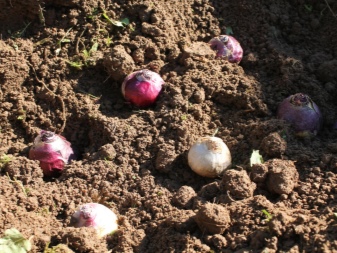
Lighting
The flower does not like the wind or draft, it also feels uncomfortable when the sun's rays hit it. Exposure to ultraviolet radiation negatively affects the colorfulness of flowering. The color of the petals under the influence of the sun can fade, therefore the area should not be heavily lit. Choose a slightly shaded area.
Temperature and humidity
The most preferred temperature for growing flowers is +20 +23 degrees. Seedlings begin to hatch when the thermometer is at the level of 5-10 degrees above zero. In April-May, when the thermometer shows + 15 + 20 degrees, flowering begins. This period lasts until the end of June, by this time the flowers dry up, and the leaves turn yellow, and in July you can cut off the shoots and dig up the bulbs.
In order for the natural process of forming a new inflorescence to begin, the dug out bulbs must be warm at +25 degrees, these conditions must be maintained for two months. A couple of weeks before planting, the planting material is taken out into the street.
After planting in October, the onions will be in the ground all winter, they are not afraid of subzero temperatures.
At the same time, soil moisture should be moderate. If the site selected for planting is in a lowland or groundwater flows nearby, this can provoke rotting of the root system. It is better to initially choose a place that is at least 50 cm away from groundwater.
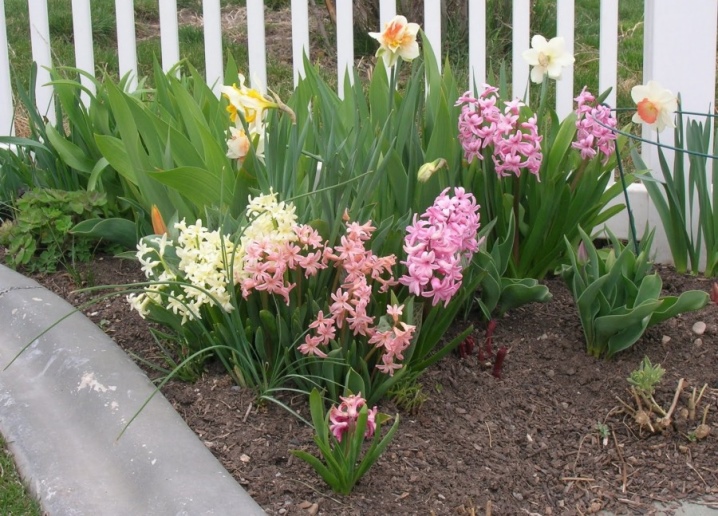
To reduce the moisture content of the earth, a full-fledged drainage system is installed during planting. It is also recommended to place the flower bed on a hill.
How to plant?
In pots
Planting 1-3 bulbs is allowed in one container. The container should be of such a shape that the specimens are located almost closely to each other - no further than 2 cm. A drainage layer is arranged at the bottom, earth mixed with sand is poured on top, and onions are laid on top. The planting material needs to be pressed a little into the soil, but the top must certainly be above the surface.
Also, before planting, experienced gardeners are advised to expose the bulbs stratification. To do this, they are placed in a refrigerator, cellar or other cool place where the temperature is maintained at 6-9 degrees without sudden fluctuations. The purpose of this procedure is to harden the planting material, then it will quickly take root in a new place and will not be afraid of harsh conditions.
Also, for growing at home, flower growers are advised to prepare a more complex version of the substrate. Sand, vermiculite, soil, hydrogel, perlite, expanded clay, pebbles and plain water are added there. In fact, the tubers themselves contain all the nutritional components, and the goal of the substrate is to provide an even flow of moisture to the roots. Therefore, the soil must be loose and moisture-consuming.
After the bulbs are planted in a pot, the container is removed to a chilled place. The cooling period is determined by the varietal characteristics. On average, the first roots should appear in 1-1.5 months, the peduncle will appear in about 3.5 months.
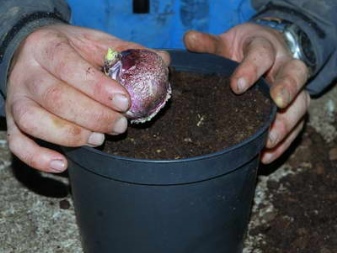

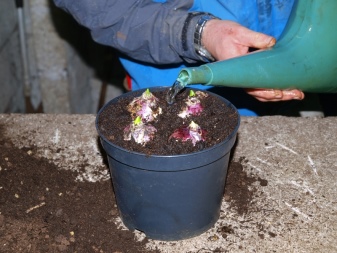
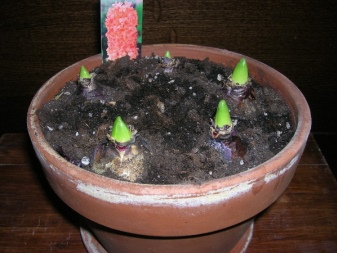
In open ground
Planting bulbs in an open area does not differ much from planting other bulbous plants. Before starting the procedure, it is important to go through all the planting material and make sure that all specimens are healthy and have not started to rot. The process itself is as follows.
- Choose a ridge up to 15 cm high so that the water does not stagnate and is evenly distributed.
- Loosen the soil to a depth of 40 cm.
- Dilute the soil with nutrient mixture. It can be prepared by combining superphosphate, magnesium sulfate and potassium sulfate. Potassium may be substituted for wood ash. Top dressing with nitrogen in the composition is not needed at this stage - it is better to save them for the spring and summer.
- Make planting holes. The depth is determined by the dimensions of the bulb. If this is a standard specimen measuring 6 cm, then a hole of 16-20 cm is sufficient.With a smaller diameter, the depth of the hole should be up to 15 cm.The recommended distance between the planting holes is 25 cm.
- At the bottom of the pits, fill in sand with a layer of 5-6 cm and, if necessary, lay out drainage from broken bricks.
- Plant your bulbs. If the soil is dry, moisten it.
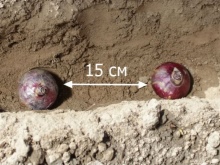


There is another way to plant bulbs. This is the so-called lazy method for those gardeners who are tired of digging out the bulbs every time, but at the same time they want to preserve the decorativeness of the flowers. For its implementation, several newspapers or cardboard are laid out at the bottom of plastic fruit boxes, a small layer of soil, a few centimeters of sand is poured on top, and the bulbs are placed on top at a distance of 15 cm from each other. Next, the planting is covered with fertile soil and buried in a box in a garden bed in autumn.
With the arrival of summer, at the end of flowering, the box can be excavated and left in the shade until autumn. It is recommended to cover it from precipitation, however, ventilation should be good. The bulbs are well preserved until autumn in this form - they will be hardened in the box, and will be protected from the heat. However, before planting, it will still be useful to check the box for damaged or diseased bulbs.
Sometimes the gardener wants to transplant a summer cottage specimen from open ground into the house, and then the dug tuber should be soaked in advance in a container of water. It is better to use a regular glass for this, in which the onion will not completely submerge, but to lower only the lower part, from where the germination of roots will begin. When the sprout hatches, you can transplant the plant into a pot with soil.
Hyacinths can be propagated in different ways. For example, an onion can be cut crosswise and planted back, after a while, small samples of the bulbs can be observed. Reproduction is possible by dividing, when the middle tuber is cut into 4 parts and planted. In this case, you will get 4 new bulbs, however, you should not wait for flowering for the next 2-3 years. The rarest method is seed propagation. With this technology, the plant blooms no earlier than 6 years later.
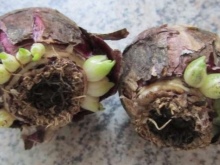
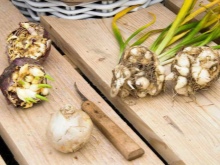
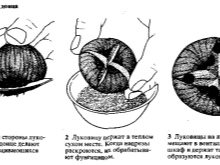
Further care
After the onions are planted on the site, the gardener will have to take good care of them and take care of their comfort, and then in the spring you can watch the magical bloom of hyacinths. So, the most important criterion for the well-being of plants will be timely watering. It is customary to add 7-10 liters of water per square meter. The recommended interval between humidification is 3-4 days. After the watering procedure, it is advisable to loosen the soil. During a drought, flowers are watered more frequently if necessary.
If the plant is planted at home, then the soil is moistened as needed. To do this, the grower must make sure that the soil is really dry. In this case, settled water at room temperature is used. It is very important not to allow drying out during flowering, as the inflorescences will fall off due to the lack of moisture, and the flower will "fall asleep" until next year.
Another important step in caring for a plant is feeding. This is required to be done 2 times a year. The first fertilizer is applied in the spring with the appearance of the first shoots; during this period, it is customary to use ammonium nitrate. The next feeding is carried out before flowering - superphosphate or potassium sulfate is suitable for this stage. Fertilizer is laid out on the surface of the ground, and dripped on top with soil and slightly moistened.
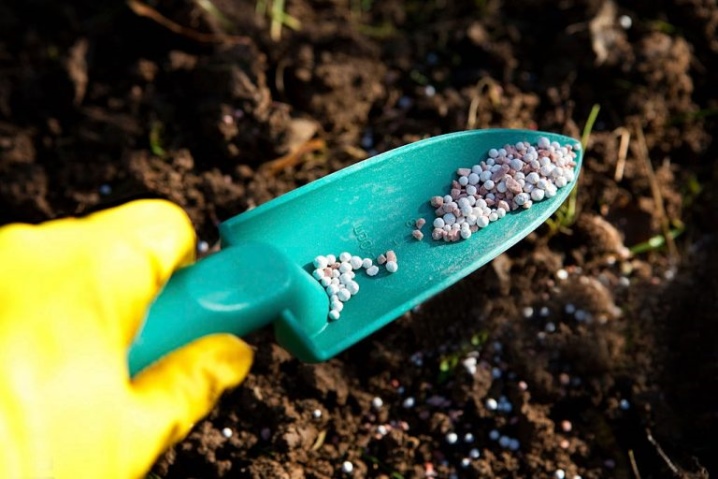
After flowering, when the stems and leaves wither, the flowers are cut off, the bulbs are dug up, cleaned, treated with the affected areas, sprayed with fungicide and sent for storage until autumn. Without this procedure, the plant will lose its decorative effect during the next flowering. The planted bulbs need to be insulated, because winter awaits them ahead. Before frost, the flower bed is mulched with a thick layer dry foliage, sawdust, peat... Can be applied spruce branches or humus. Recommended layer - 20 cm.In the winter months on the garden pouring snow. These manipulations will prevent young bulbs from freezing during the first winter.
Particular attention should be paid to protecting plants from diseases and pests. Specimens planted in open ground are distinguished by high immunity to infections, which cannot be said about greenhouse and forcing specimens. Under unfavorable conditions during storage of planting material, their surface can infect penicillosis. The disease develops if the temperature in the room where the bulbs are stored is set to a temperature below 17 degrees and high humidity. The dried ends of the roots indicate the disease. Having made a cut slightly above the bottom, you can observe how the insides turned light brown.
If an infected onion is planted on a site, then its root system will develop passively or will not give roots at all. Fragile peduncles will not rise. Gradually, the fungus will spread to the entire plant. As a preventive measure it is important to store the planting material at an air humidity of no higher than 70%, and plant the bulbs with prematurely grown roots immediately.
Another serious ailment that hyacinth can fall prey to is yellow bacterial rot. Its presence is indicated by such signs as stopping growth, the formation of streaks and stripes, and decay of some parts.
To prevent rot from infecting neighboring plantings, the diseased specimen should be eliminated from the site and destroyed, and the place where it grew should be treated with a formalin solution or bleach.
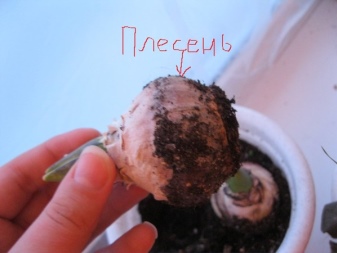
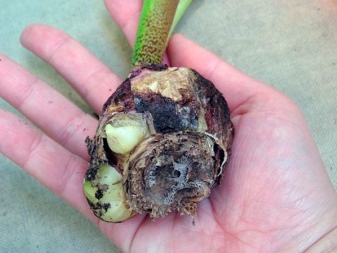
As for insects, most of all they love to feast on the juice of the presented culture. flower flies. Such means as "Mukhoed", "Tabazol" or "Aktara" help to fight this pest. Another frequent uninvited guest in the flower bed is the meadow tick. Most often, it appears in late spring or early summer. It is dangerous because it carries incurable viruses. In specimens affected by a tick, peduncles are deformed, the leaves become yellow and dry. In the fight against this insect, drugs "Actellik" or "Talstar" will help.
The third common pest is a bear.... Folk methods will allow you to get rid of it. For example, you can dig holes in a flower bed, place manure or rotted straw on the bottom and cover with a piece of board. Insects will crawl to the traps for laying eggs, and after 3-4 weeks, individuals can be destroyed.

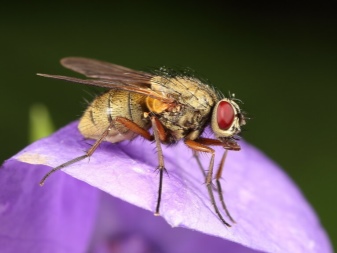
If chemical preparations are more familiar, then you can use the "Medvetoks", "Beard", "Boverin", "Grizzly" or "Thunder" products.
For planting hyacinths in open ground, see the next video.







































































































The comment was sent successfully.